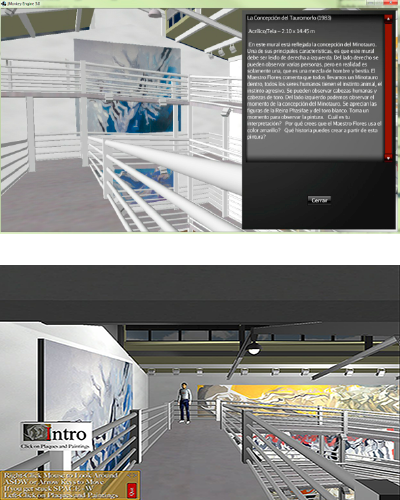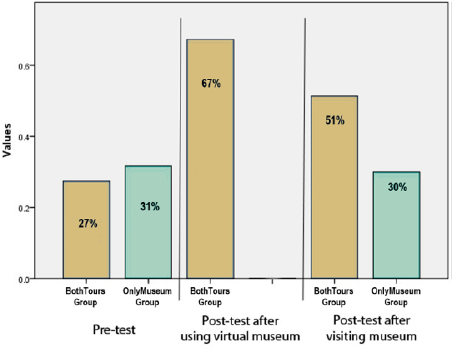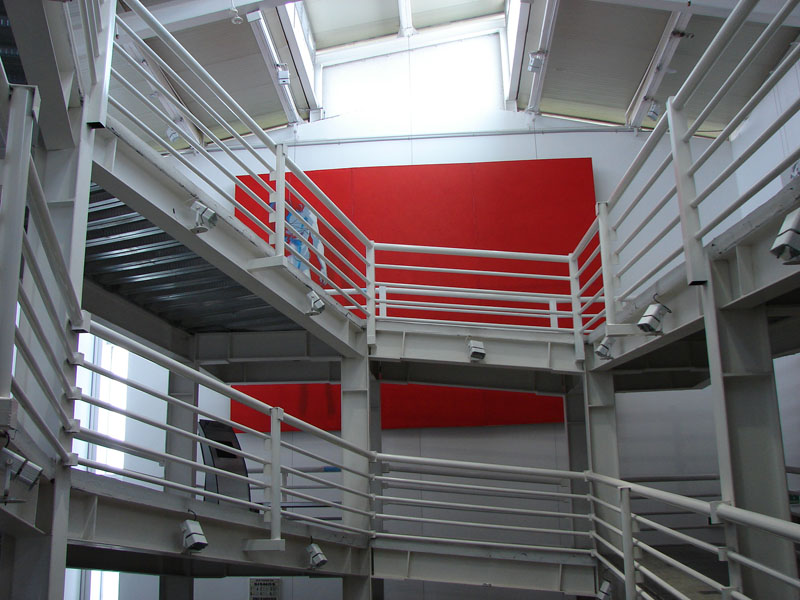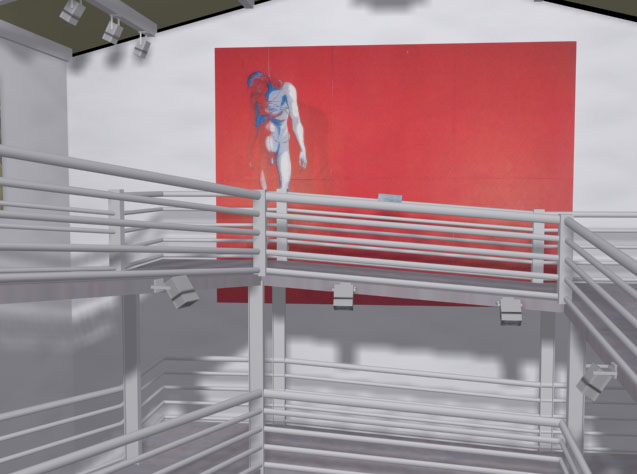|
|
Virtual Learning Environments
Museum Project Available for ViewingThe initial museum project was developed using the CRG Framework and included networking to allow communications to the research server to collect data as students interacted with the environent. This version is a port to the Unity framework and does not provided any networking components. This version has also been translated from the Spanish version (text and audio) to English (text and audio). Joint UNT/UAME Research ProjectCRG provided free access to the CRG framework for the creation of the research project and provided programming assiatance to port the graphical assests into the environment. Pilot Study 2010The virtual environment, a replica of an exhibition in one of the existing Leopoldo Flores Museum located in Mexico, was created in 2010 and included all the pieces and information that are being exhibited. The environment was created by Dr. D'Alba based on her trip to Mexico as part of the pilot study. Selection of the museum exhibit, assets creation, Spanish language audio dialog narration, and client integration occurred over a 4 creation month period. Dr. DíAlba created the digital rendering of the museum using Autodesk 3DS Max software. Architectural plans, high quality photos, and movies taken of the space on the visit in Ma 2010 were used to ensure accuracy of the virtual museum. User testing and the pilot study took another 3 months. The pilot study focused on user experience and satisfaction between the virtual and real museums. Firstly, the Museum group (MUS1) and Virtual group (VE1) had approximately the same knowledge acquisition after the first interaction for this group of participants. Secondly, the VE1 participants that used the virtual environment first and then visited the museum had higher content knowledge measured. The combination of both the prolonged virtual environment interactions and the higher discourse and interactions seen during the guided tour seem to be factors in improved knowledge acquisition. Additional results included a) Participants who visited the real museum first spent less time in the virtual environment. b) Participants who visited the virtual museum first spent more time in the real museum, they also spent more time reading about the artwork in the virtual museum. c) Participants who used the virtual museum first had higher discourse during the real museum tour. d) During interviews, the participants indicated that the virtual museum provided more depth of information then the guided tour. The results of this pilot study created the research focus in the 2011 research study.
Movie of current project Museums and Education 3D Virtual Environments. Click to Play.
Research Study 2011
Published Research ResultsAs soon as Dr. D'Alba's dissertation is published and the results of the pilot study are published, we will link to them on the site.
|
© 2001-2012 Created Realities Group all rights reserved. VXInteractive is a trademark of Created Realities Group, Corp.





 The virtual museum environment has been an interest of ours since early in our development of virtual learning spaces`. We created several test museums during our framework development. They ranged from a tour of random art, a tour of a mine, to a tour and interaction that integrated both spoken and heard languge skills (which resulted in published research). The most recent effort is shown below. The movie shows features from the latest CRG Client v7 development. The research project created the assests locally and imported them into the client for viewing and interaction. CRG has been thrilled to be able to use our development work to generate new research into how 3D online learning environments can improve learning. A new study is planned for later in 2012 that we have agreed to help with focused on language translation between Spanish and English and the art collection.
The virtual museum environment has been an interest of ours since early in our development of virtual learning spaces`. We created several test museums during our framework development. They ranged from a tour of random art, a tour of a mine, to a tour and interaction that integrated both spoken and heard languge skills (which resulted in published research). The most recent effort is shown below. The movie shows features from the latest CRG Client v7 development. The research project created the assests locally and imported them into the client for viewing and interaction. CRG has been thrilled to be able to use our development work to generate new research into how 3D online learning environments can improve learning. A new study is planned for later in 2012 that we have agreed to help with focused on language translation between Spanish and English and the art collection.
 The study took place in the fall of 2011 in the college of architecture and design at a state university in Mexico. The dissertation research study examined knowledge acquisition with regards to pre-visualization of learning spaces. Over a period of four days, two groups of participants were asked to utilize the virtual museum, visit the real exhibition, and answer a series of pre and post-tests, surveys, personal interviews, and group interviews. As shown in the figure right, the participants using the virtual environment had increased knowledge acquisition. Results also showed that participants from Bothtours group showed increased participation during the museum tour either agreeing, being more participative, concurring and showing acceptance, asking questions, or even giving their opinion and analysis of the paintings. Finally, participants who experienced the virtual museum concurred that using it was a positive experience that prepared them to go to the real museum because they knew already what they were going to find. All of them wanted to go to the museum after using the virtual one and none of them felt they have had enough with the virtual tour. Most of the participants agreed that the information contained in the virtual tour helped them to interpret and have a deeper understanding of the paintings. All the participants from Bothtours group also agreed the information offered at the virtual museum complemented the one presented at the museum.
The study took place in the fall of 2011 in the college of architecture and design at a state university in Mexico. The dissertation research study examined knowledge acquisition with regards to pre-visualization of learning spaces. Over a period of four days, two groups of participants were asked to utilize the virtual museum, visit the real exhibition, and answer a series of pre and post-tests, surveys, personal interviews, and group interviews. As shown in the figure right, the participants using the virtual environment had increased knowledge acquisition. Results also showed that participants from Bothtours group showed increased participation during the museum tour either agreeing, being more participative, concurring and showing acceptance, asking questions, or even giving their opinion and analysis of the paintings. Finally, participants who experienced the virtual museum concurred that using it was a positive experience that prepared them to go to the real museum because they knew already what they were going to find. All of them wanted to go to the museum after using the virtual one and none of them felt they have had enough with the virtual tour. Most of the participants agreed that the information contained in the virtual tour helped them to interpret and have a deeper understanding of the paintings. All the participants from Bothtours group also agreed the information offered at the virtual museum complemented the one presented at the museum.

